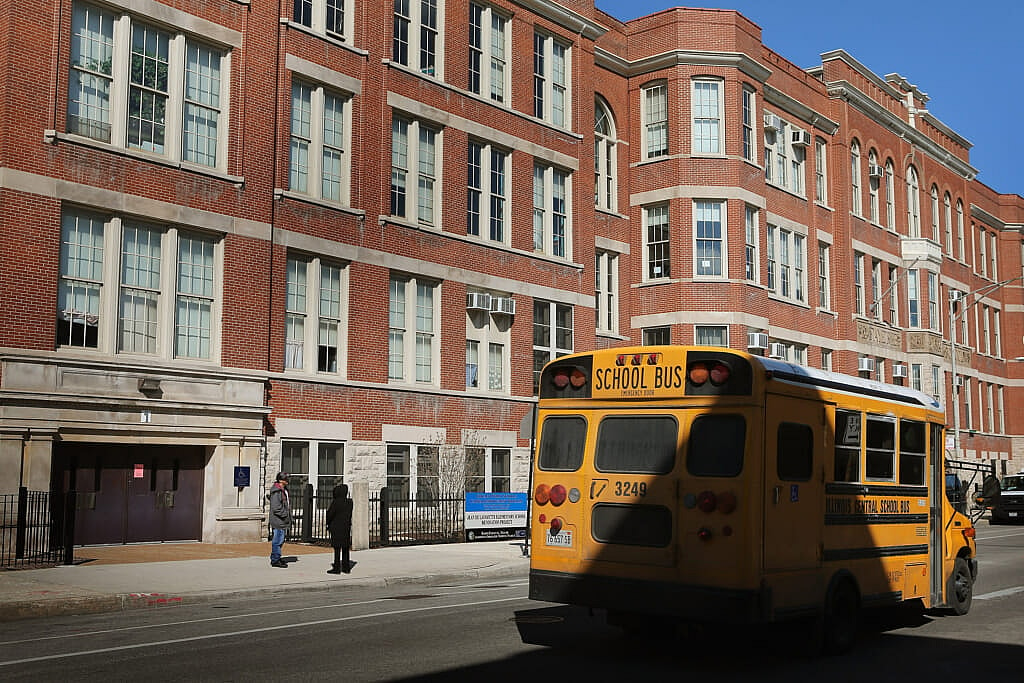In a recent interview with talk-radio host Marc Cox, Missouri Governor Mike Parson said, “These kids have got to get back to school. …They’re at the lowest risk possible, and if they do get COVID-19, which they will, they’re not going to the hospitals. They’re not going to have to sit in doctor’s offices. They’re going to go home and they’re going to get over it.”
Parson advocates for more social responsibility and less government intervention as the Trump administration pushes for school districts across the country to send children back to school.
Read More: Black girl, 9, youngest person to die from COVID-19 in Florida
Unfortunately, not only is the COVID-19 curve going in the wrong direction for this country, the standard operations of any school suggest that having 31 people in a classroom in close quarters anywhere is a Petri dish of disaster.
The risk only gets worse when a classroom has no working windows, no ventilation, no regular sanitary supplies, and limited bathrooms.
Right now, America’s public school system serves 50.8 million students —about 90% of America’s pre-K through 12th grade children — and of those children, 52% of them identify as non-white. To this day, schools with mostly Black and brown students struggle with keeping arts and music in their schools while their independent and/or private school counterparts enjoy a plethora of academic and extracurricular resources.
Making sure Black lives matter isn’t just a statement, but also in how we treat Black students in their own schools.
The coronavirus only exacerbated the inequities. In New York City and other cities, we witnessed the devastating effects of these differences when the number of cases rose substantially in Black and brown neighborhoods, often hubs for essential workers.

Some critics might tell us that people across the country have contracted the virus equally, but stats show the disparities persist. For all age groups, non-Hispanic white people account for about half of all deaths in the country, but a third of school-aged (5-17 years old) children who’ve died were non-Hispanic Black. Hispanic/Latino school-aged children comprise about 40% of those deaths.
If 0.01% of the Black students in the five largest school systems in the country (NYC, Los Angeles, Chicago, Miami, and Clark County, Nevada) died due to COVID-19, that would be 634 Black students.
If we took 0.1% of the students in our Blackest cities (by population: Detroit, Memphis-Shelby, Baltimore, Atlanta and Cleveland) that would account for 285 Black students. If we looked at just the St. Louis school district—the second largest public school system in the state—and ran the same numbers, we would project that about 20 Black students would die of COVID-19. St. Louis County has recorded 606 deaths from coronavirus. By contrast, their largest school system, Springfield R-XII, has a student body with 75% white students and a total of nine recorded deaths in Greene County.
That’s whole schools of children dying in a matter of months because our country saw fit to shove kids into school buildings when they weren’t ready.
Right now, about 10%—or 3,253—of Missouri coronavirus cases are for persons between the ages of 0 to 19. While it’s true that only one child has died in Missouri thus far, adults serve those in those buildings too. Anyone who’s ever worked in a school building knows how difficult it is to maintain social distancing, keep masks on, and follow other sanitary norms as outlined by the CDC in a school with children still growing in their understanding of societal norms.
Which students are more likely to have more school resources in the form of cleaner schools, full hand soap and sanitizer dispensers, clean water, sanitary wipes for desks, full-time guidance counselors and social workers, and custodians?
Which students are more likely to face environmental racism, lack of health care, and substandard water and food sustenance? Which students are more likely to be ignored when these concerns get brought to the table?
Read More: 40 people infected with COVID-19 after Alabama church event
How can we trust that any policymaker will do for Black students what they could have been doing before this pandemic in the way of keeping schools clean and safe? Similar to how white parents exerted their power by enrolling in private schools to avoid integrating with their Black neighbors, white families are considering creating their own pods so they can continue schooling their own children while Black families are less likely to do this, thereby exacerbating the opportunity gaps that have existed pre-COVID-19.
It’s this confluence of conditions pre-COVID-19 that we’ve known were perilous to Black kids: lack of universal health care, economic disparity, racism, and the scourge of child poverty. Governor Parson knows they’ll contract the virus and still finds it permissible to continue forth with the death march.
The walls have closed us in, and we keep paying for them.

José Luis Vilson is a full-time math teacher, writer, speaker, and activist in New York City. He is the author of This Is Not A Test: A New Narrative on Race, Class, and Education has spoken about education, math, and race for a number of organizations and publications, including the New York Times. He is a National Board Certified teacher, a Math for America master teacher, and the executive director of EduColor.
Have you subscribed to theGrio’s new podcast “Dear Culture”? Download our newest episodes now!


